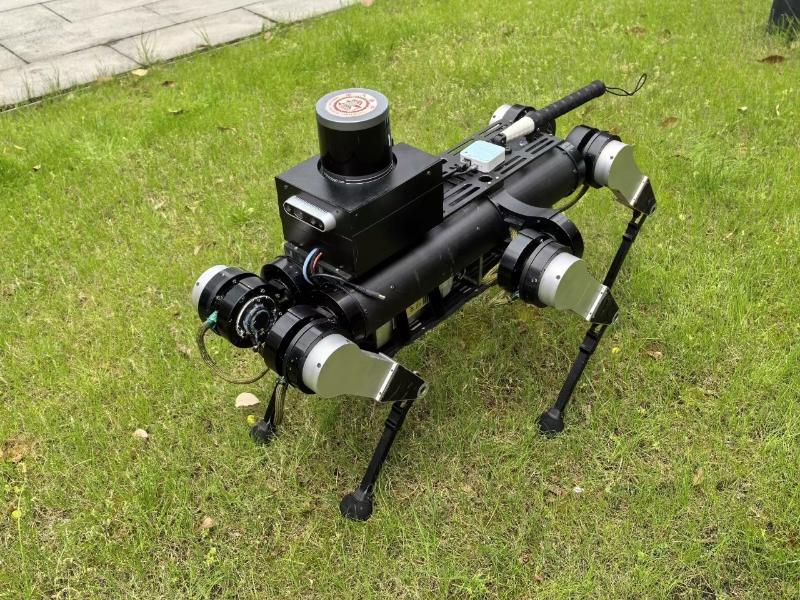Robot Guide Dog Becomes Eyes for the Blind

PHOTO: Shanghai Jiao Tong University
By?Staff?Reporters
A robot guide dog raises its six legs, stamps the ground a few times, and then gently leads the visually impaired person forward via the fixed guide cane. If the person holding the cane wishes to walk faster, the robot will accelerate its pace upon receiving instructions.
This six-legged robot guide dog was developed by a research team from China's Shanghai Jiao Tong University. The robot has the function of visual environmental perception and can autonomously navigate to its destination, dynamically avoid obstacles and identify traffic lights.
The robot's primary task is to understand the user's intentions, while always maintaining coordinated actions. The team has integrated multiple interaction methods into the robot, such as hearing and touch.
It also has the capacity to understand semantic information based on voice recognition models according to the person's voice instructions, and respond quickly and accurately. The current voice recognition accuracy rate is over 90 percent, and the response speed is within one-second.
In addition, the fixed cane can achieve force perception interaction between the person and the robot, guiding the person to move forward and turn. The cane can also be pushed and pulled to dynamically adjust the robot's walking speed.
The robot's current maximum speed is 3m/s, which can meet the needs of the person, such as walking slowly or quickly, and even running. Moreover, the unique configuration of the six legs ensures that the robot can walk stably with low noise levels. The robot can also help overcome the severe shortage of guide dogs in China.






